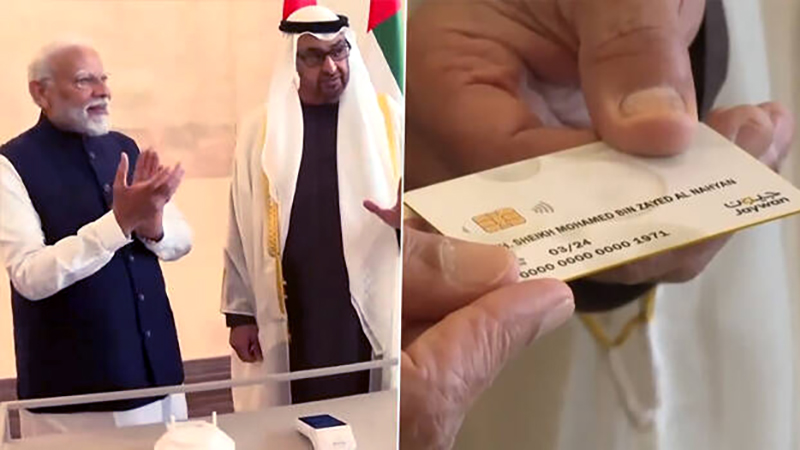Last week, President of the UAE Sheikh Mohamed bin Zayed Al Nahyan and Prime Minister of India Narendra Modi, jointly launched a new payment card, Jaywan.
The card, which unites India’s payment gateway Unified Payments Interface (UPI) owned by the National Payments Corporation of India, and Aani, the UAE national payment gateway managed by Al Etihad Payments, will enable citizens of both the countries to make local payments digitally.
Not only will it deepen bilateral economic ties, it will also make it easier for the growing number of tourists from India.
In India, the use of UPI has grown exponentially since its launch in 2016. It is averaging a staggering 12 billion transactions a month. Further, nearly three-quarters of this is for transactions less than ₹500 in value.
Now UPI is seeking to grow its global footprint through a collaboration with Jaywan. Here is a short explainer.
1. What is Jaywan?
It is the new card which enables real-time digital payments in rupees for Indian nationals visiting the UAE. Vice versa, UAE nationals visiting India too can use the card for their local transactions. It will simplify and speed-up merchant transactions. Aani already offers this through eight commercial banks within the UAE. This facility will now be extended to cross-border transactions involving India.
2. How does it work?
A customer’s bank account/wallet is linked to their UPI ID through their mobile phone. This UPI ID can then be used to make instant payments — either by scanning a QR code or to a registered mobile phone
number.
3. Is this payment in real time?
Yes. Normally, any online payment will require access to the electronic infrastructure of a commercial bank. This would mean an elaborate process of registering the account, verifying it and so on.
Earlier payments were made using bank cheques, which took some time to settle. And if it involved a
cross-border payment, there was a delay in settlement besides a foreign exchange transaction cost.
In the case of Jaywan, the transaction will go through instantly to the desired ID.
4. Will the money transfers be restricted to banking hours?
No. All payments are instant and 24×7, regardless of banking hours and holidays.
5. Is there a limit?
This is not clear now. At present Aani imposes a limit of 50,000 AED on each transaction within the UAE.
6. Will this save a customer money?
Yes. Normally, an Indian tourist would either carry the requisite foreign exchange — the bank will deduct charges for converting rupees into dirhams. Alternatively, they would use their credit/debit cards. Once again, the bank will levy a charge embedded in the rate at which they make the conversion from dirhams to rupees. In India, NPCI charges a flat rate. Presume these terms will be extended to transactions in the UAE using Jaywan. (No specific clarification has been issued yet).
7. Who can get a Jaywan card?
Any resident owning an Emirates ID can apply for the card. Indian tourists can use their UPI ID to transact in the UAE.
8. Can Jaywan be used to undertake peer-to-peer transactions?
Yes. Individuals can transfer sums to each other using the Jaywan/UPI ID.
9. Is Jaywan better than using a credit card?
Depends upon the use. If a customer is looking for a grace period to stagger the payments, then the credit card is a better option. However, if they desire an instant settlement then Jaywan is a better option.
10. Why is this development significant?
It deepens the economic bonds between the two countries by connecting the payments platforms. This integration is a complex task and involves close cooperation between not just NPCI and Aani, but also the regulators of both the nations. – The writer, a former Managing Editor of The Mint, is a senior journalist and researcher. – Anil Padmanabhan is a senior journalist based in New Delhi


Leave a Reply